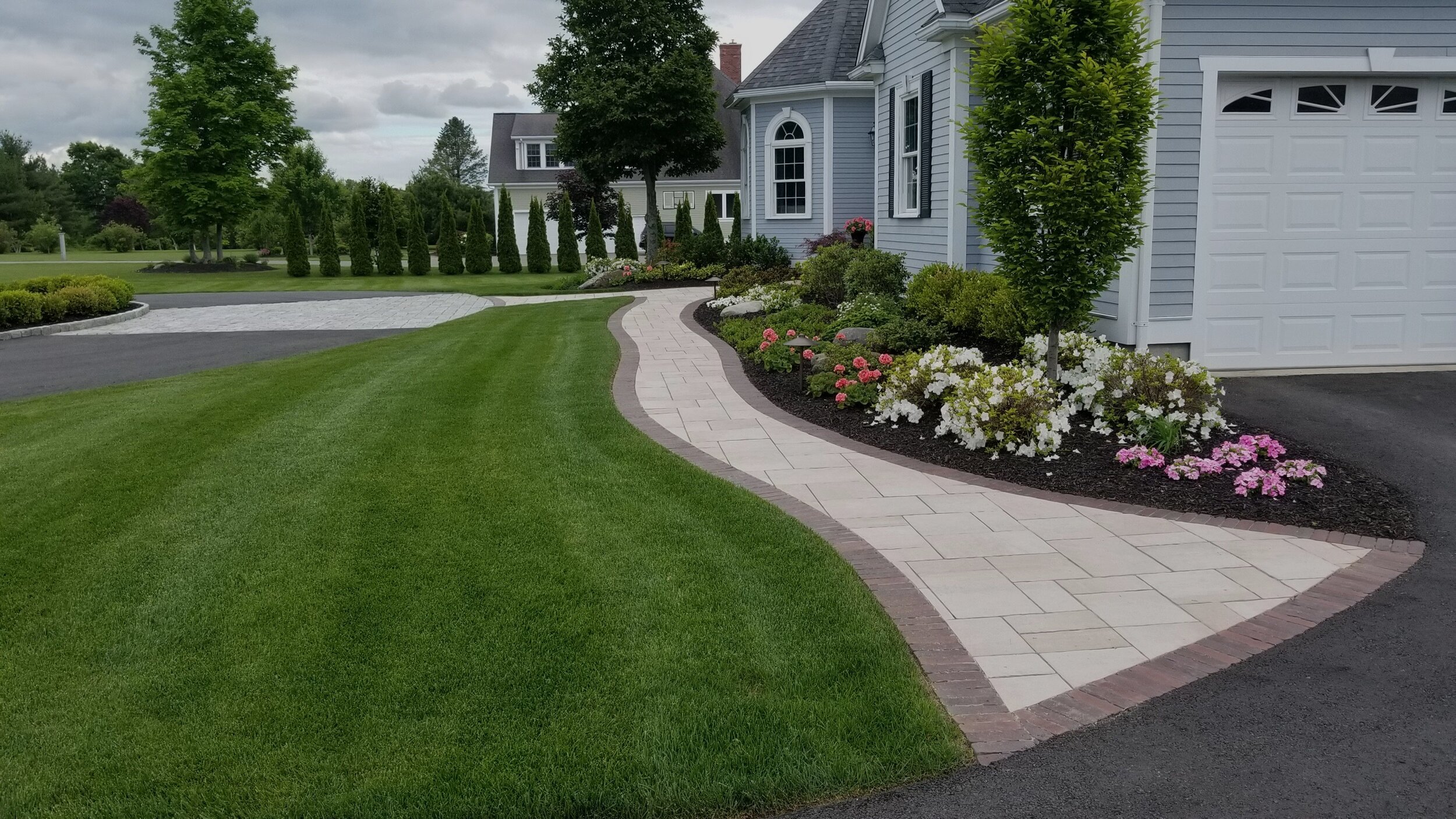How Palm Desert Landscaping Can Elevate Your Home's Curb Appeal
How Palm Desert Landscaping Can Elevate Your Home's Curb Appeal
Blog Article
A Comprehensive Overview to Creating and Implementing Effective Landscaping Solutions
The art and science of landscape design extend beyond plain looks; they involve a thoughtful combination of design principles, ecological stewardship, and useful execution. What strategies can one utilize to make certain these landscapes not only grow but likewise grow in harmony with their surroundings?

Comprehending Landscape Design Concepts
One may wonder what foundational components add to effective landscape layout. At its core, successful landscape design rests on several vital principles that guide the setup and selection of components within an area. These concepts include unity, rhythm, proportion, and equilibrium, each serving to develop a harmonious exterior atmosphere.
Unity describes the cohesive partnership among different components, making sure that they collaborate cosmetically and functionally. Balance can be attained through unbalanced or symmetrical setups, allowing the landscape to feel secure and inviting. Proportion includes understanding the scale of aspects in connection with each other and the surrounding atmosphere, advertising visual harmony and comfort.

Analyzing Your Outdoor Space
Before applying the principles of landscape design, a detailed assessment of your outside room is vital. This initial examination aids specify the scope of your landscaping job and makes sure that your layout straightens with the unique qualities of your property. Begin by evaluating the dimensions of your area, taking exact dimensions to recognize the readily available area for various aspects such as paths, patio areas, and yards.
Next, observe the existing functions of your landscape, including topography, soil quality, and drainage patterns. These factors considerably influence plant selection and placement. Additionally, assess the sunshine direct exposure throughout different areas throughout the day, as this will influence the kinds of plants that prosper in your garden.
Consider the microclimates created by structures, trees, and other obstacles, as they can influence temperature level and wetness levels. Take note of any existing plants or hardscape elements that you desire to eliminate or retain. This thorough examination lays the groundwork for a well-informed and reliable landscaping solution, making certain that your style is not only cosmetically pleasing but sustainable and also practical for years to find.
Lasting Landscaping Strategies
These techniques not just promote environmental equilibrium yet also enhance the useful and aesthetic value of a landscape. Carrying out reliable watering systems, such as drip watering, minimizes water waste and guarantees that plants obtain ample moisture (Palm Desert Landscaping).

An additional effective method is the critical placement of trees and hedges to offer all-natural windbreaks and color, thus reducing power costs (Palm Desert Landscaping). Rain gardens can be incorporated right into the landscape design to manage stormwater overflow effectively, filtering contaminants prior to they get in rivers
Choosing the Right Plants
Choosing the right plants for your landscape is critical to achieving both visual appeal and environmental harmony. The procedure starts with an understanding of your neighborhood environment, dirt problems, and the certain microenvironments within your landscape. Examining variables such as sunshine direct exposure, wetness degrees, and existing plants will certainly assist you pick plants that flourish in your one-of-a-kind setup.
Consider incorporating native plants, as they are well-adapted to local conditions, need much less maintenance, and support local wildlife. Additionally, picking a diverse variety of types can enhance biodiversity while decreasing the danger of condition and bug break outs. It is important to examine the development habits, growing durations, and seasonal colors of prospective plants to develop a dynamic and natural landscape.
In addition, consider the meant usage of the room; for example, if the location will experience high foot traffic, select resistant ground covers. By thoughtfully choosing plants that straighten with both your environmental needs and visual objectives, you can create a lasting landscape that not just enhances your building yet likewise contributes favorably to the surrounding ecosystem.

Application and Upkeep Strategies
When the ideal plants have actually been chosen for your landscape, the focus moves to reliable execution and ongoing maintenance methods. Effective installation begins with appropriate site prep work, that includes soil testing to identify nutrient degrees and pH, adhered to by modifying the soil as needed. Thoroughly set up plants according to their development behaviors and light requirements, guaranteeing appropriate spacing to advertise healthy development.
Watering is an essential component of application. Develop a watering timetable that thinks about the certain demands of each plant varieties, readjusting for seasonal changes. Utilizing drip irrigation systems can enhance water efficiency and reduce runoff.
Maintenance strategies must be implemented to ensure the long life and vigor of your landscape. Normal jobs consist of weeding, mulching, and pruning to manage growth and prevent condition. Fertilizing must be carried out based on soil examinations, supplying the needed nutrients without over-fertilizing.
Keeping an eye on for diseases and pests is essential; early discovery can stop considerable damage. Bonuses Seasonal adjustments to upkeep routines, such as preparing and winterizing perennials for springtime growth, will certainly guarantee that your landscape continues to be healthy and balanced and visually attractive year-round.
Verdict
Effective implementation and ongoing maintenance even more make certain the long life and vitality of landscapes. By integrating these aspects, landscapes can be transformed right into attractive, functional environments that promote biodiversity and contribute positively to neighborhood wellness.
One may question what fundamental components add to reliable landscape layout. At its core, effective landscape layout pivots on numerous key principles click to find out more that guide the arrangement and selection of elements within a space.Selecting the right plants for your landscape is essential to achieving both visual appeal and ecological harmony. It is important to assess the growth habits, blooming durations, and seasonal shades of possible plants to produce a natural and vibrant landscape.
Once the right plants have actually been selected for your landscape, the emphasis moves to efficient execution and ongoing upkeep approaches.
Report this page